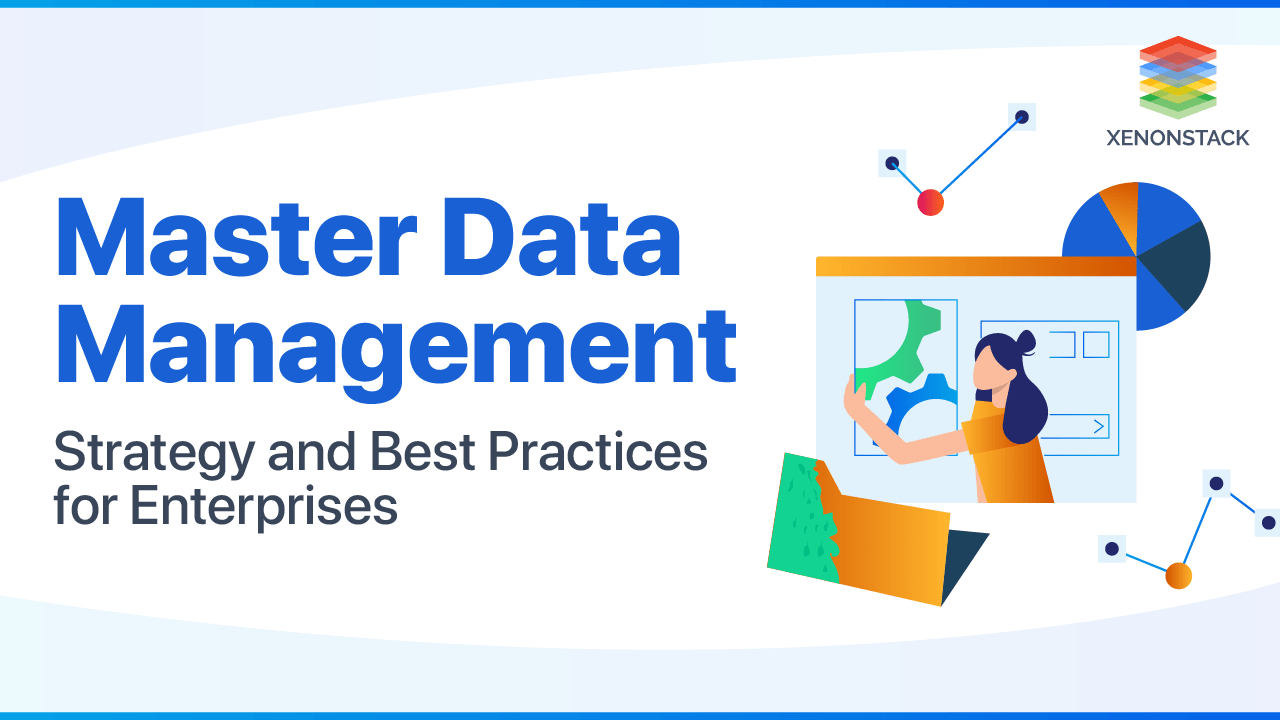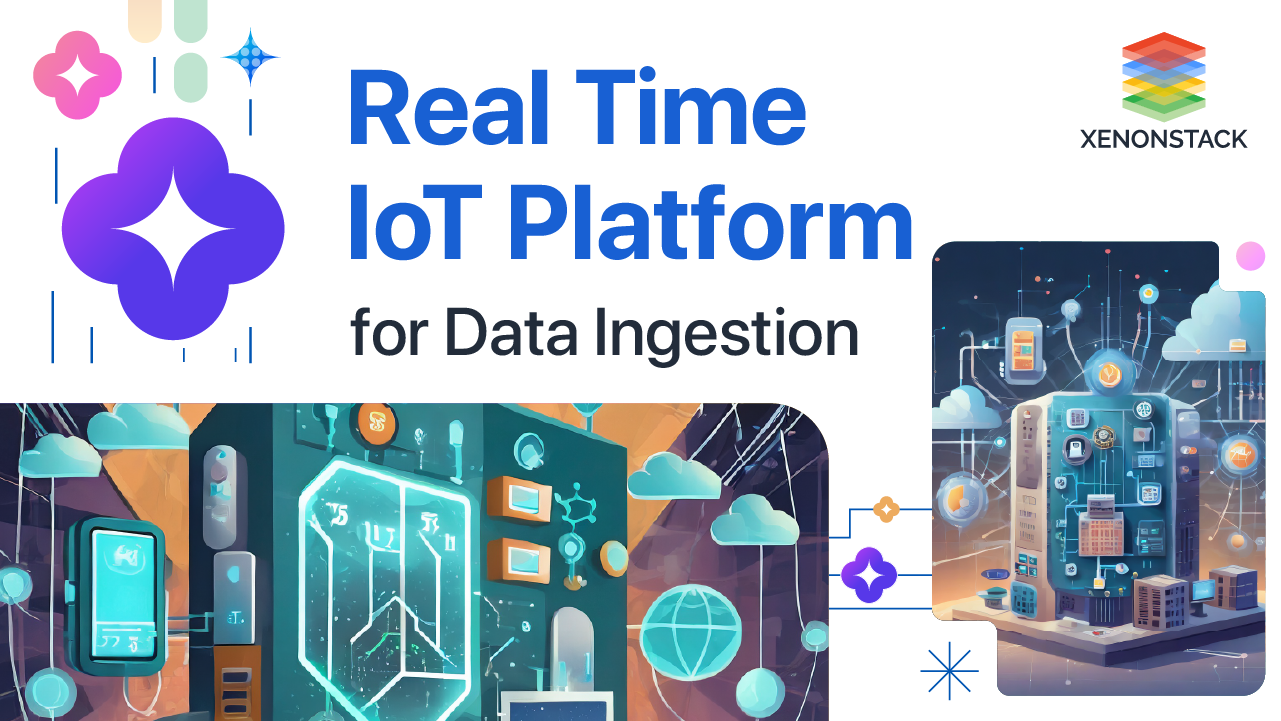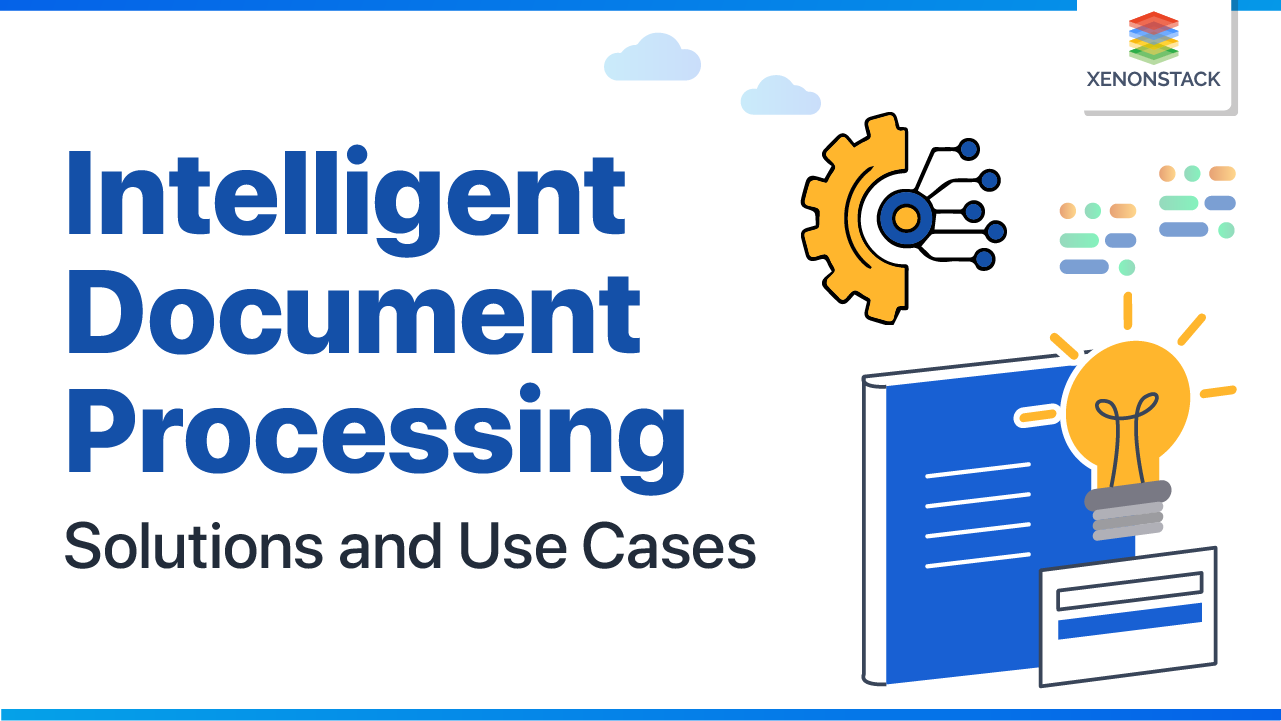
Overview of Master Data Management
Master Data is the core that refer to the business information shared across the organization. It consists of the structural and hierarchical reference, which is essential for a specific business. Eventually, it remains constant, but we need it to update regularly. It is a key thing to know in MDM.
Now a day's information is valuable. Managing the information correctly supports a company to achieve a specific set of goals. Such is the role of master data representing all data, which provides quick and accurate access to the insight The information present in the master data varies from industry to industry and describes the business objects that include the most valuable, agreed-upon information shared across a company.
The method by which can satisfy the test requirements of test teams by including high-quality data. Source: Test Data Management
What are the factor of Master Data?
- Analytical Data: Measured or derived from transactional data to help the company's decision planning.
- Unstructured Data: Obtained in the e-mail, white papers similar to this, magazine articles, and PDF files.
- Reference Data: This describes the set of permissible values used by other (master or transaction) fields. It classifies and describes information and usually changes slowly, reflecting changes in the business methods, rather than changing in the usual business way.
- Metadata: Reside in a formal repository or many different forms such as XML documents, report definitions, column information in a database, log files, and configuration files.
- Hierarchical Data: It stores the relations between other data. It may be stored as part of an accounting system or individually as descriptions of real-world connections, such as company organizational structures or product lines. This is sometimes supposed a super MDM field because it is important to understanding and sometimes discovering the connections between master data.
- Transactional Data: Produced by applications in establishing enterprise processes of the company.
What is Master Data Management?
It is the core process that helps manage, centralize, and organize data according to business marketing and operations. It regulates your master data over the company. Master, a management solution, helps create a combined ecosystem for the company and IT to work in sync with each other.
A company with a MDM solution assures consistency, correctness, capability required for all company operations significant to suppliers, clients, partners, prospects, and employees.
Why is Master Data Management necessary?
Many organizations face data-related issues as they grow and prepare for insights. And it results in inefficiency if the prepared information is error-prone. MDM consists of tools and Management that coordinate and organize information across the enterprise, which helps access accurate information in the organization.
It helps in managing the critical portion of the data and provides integration as a single source. It may store in a single repo, but data is stored at various places in the organization when it accesses multiple functions. As multiple applications access master data, errors in one form can also cause failure in all other applications that access master data.
Who should be involved in an MDM program?
Below are the factors involved in MDM program:
Administrators
Individuals in IT who are responsible for setting up and configuring the solution.
Data Stewards
Individuals are responsible for fixing, cleaning, and managing the infformation directly within the solution. Ideally, data supervisors/Stewards come from departments across the company, such as banking and marketing. Typically, supervisors' projects within the MDM program are set by governance users.
Governance
Individuals who drive the definition, specifications, and solution. These users help administrators understand what to create, and stewards know what to control and control it.
Governance users talk to data stewards about how information should be handled, including the methods for doing so, and then check the agents responsible for serving those requirements. Data governance users also need to maintain a feedback loop from the MDM software to ensure everything is working as expected.
Governance is the process and management of data availability, usability, integrity, and security of information used in an enterprise. Source: Big Data Governance
What are the Best Tools used to Master the Data?
Various MDM Tools and software are enabling us to manage the Metadata of an Enterprise. Some of them are below:
- IBM Infosphere
- Oracle
- Ataccama
- Profisee
- Omni-Gen
- SAP Netweaver
- Dell Boomi
- Tibco
- SAS Master data management
- Visionware MDM Agility Multichannel
What are the types of Master Data?
Master Data describes company targets upon which transactions are performed and the dimensions on which the report is managed. It comprises of three types:
Reference Data
It are classified schemas (data organized in classes or groups) that refer to applications, data stores, and processes. It includes a code list, status, codes, flags, and product hierarchy.
Enterprise Master Data
It represents the single source of market information used across multiple system applications and processes regardless of locations.
Market Master Data
It is the single source of market information used across market places regardless of locations. Usually, master data is non-transactional, but the information is contained in orders and receipts in some cases.
How to maintain a master list?
Single Copy
In this approach, there is only one master image. All additions and modifications are made immediately to the master. All requests that use master data are rewritten to use the new data rather than their current data.
Multiple Copies
In this approach, master data is added or modified in the single master image, but changes are sent out to the source systems in which copies are stored locally. Every request can update the parts of the data that are not part of the master data, but they cannot modify or add to master.
Continues Merge
In this approach, applications are authorized to modify their copy of the master . Modifications made to the source data are sent to the master, merging into the master list. The changes to the master are then sent to the source systems and referred to the local copies. This approach wants a few modifications to the source systems.
Many organizations are considering MDM as a solution, attracted by the promise of an enterprise wide trusted view of critical data about customers, citizens, and products. Source: Gartner, Inc
What is the Architecture of Master Data Management?
MDM follows broadly follows three frameworks, which are:
- Registry Architecture
- Hybrid Architecture
- Repository Architecture
Registry Architecture
In this type of structure, the system is granted only read-only access, which states that unwanted persons cannot modify the master in any way. It gives a read-only representation to master for downstream systems that require understanding but not change in the master
The implementation structure is useful to eliminate duplications and provide a consistent way to master data. It offers low-cost, fast integration with the profit of minimal intrusion into your application systems. This framework is beneficial in finding redundancies.
Hybrid Architecture
In this, the system has the power to change or modify the master data. This specialty helps to achieve quick access, and also, as the order has the capability to modify the data, then the quality of information also improves.
This characteristic includes both the registry and repository. Hybrid Architecture completely materializes all master data properties in the MDM System. Authoring of Master Data can happen in the MDM System as fine as in the application systems. From a completeness perspective, all attributes are there.
This type of framework allows both the Master Data Management system and application system to work in collaboration. Its downside is, the cost for supporting this type of structure is sometimes high as it is not very easy to change and modify the master data. Its main aim is to centralize the master data and achieve consistency.
Repository Architecture
In this Architecture, also called Enterprise or Centralized or Transactional Architecture, the whole set of master data for a company is stored in a single database, including all the attributes required by all the applications that use the master data.
This type of framework assures stable consistency, accuracy, and efficiency. There is no overhead of the application system as MDM controls all the functioning, thus reducing the time.
The applications that utilize, build, or manage master data are all changed to use the master data in the center, alternatively of the master data before maintained in the application database, making the master data hub the system of entry and record system.
Build a primary central repository of customer data by combining data across different source systems. Taken From Article, Master Data Management in Banking Sector
What are the various functions of Master Data Management?
There could be numerous functionalities of a particular root management system, but the following are the main essential ground functionalities for every MDM system are:
- Content Access
- Relationship Hierarchy
- Access
- Change Management
- Processing
Content Access
It is undoubtedly all about the material. Everything connects internally between the source data and the system trying to fetch. The content accessed should be distinct, and there should be no duplicity.
Relationship Hierarchy
This is a crucial functionality because we are trying to access any data in the system. It should have some relationship hierarchy with any other parent branches of that part of the system.
Access
It is another primary function of master data management since we must have clarity about the type of data we're looking for and also the knowledge of who gets access to it is also a trusted member of the organization, not following this and allowing a non-privileged member to access this might lead to the misguidance of the data.
Change Management
This means that whatever data you are looking to operate on should be readily available for change under authorized regulations, and the change should be managed efficiently every time prompted.
Processing
This can be evaluated as the back end flow of the data by which we mean the flow of processing of data in either way accessing or injecting should be quite smooth and error-prone and are used for measuring the certain constraints such as quality clinical care, cost incurring, patient safety, etc.
What is the Strategy of Master Data Management?
There are numerous best practices your enterprise should respect when developing and executing a MDM strategy.
1. MDM isn't one and done: The strategy should be made into your company's foundation. If data alignment is only a one-time occurrence, you will frequently find the same mismanagement problems.
2. Buy-in at the top: For MDM to be successful, leaders within all company units must develop the strategy and continuously connected in continuous governance discussions.
3. Knowledge: On the other hand, all employees and departments must be trained and regularly retrained on how to format, enter the store, and access data.
4. Humble start, but think big: When operating out a new MDM strategy, you want to focus on a smaller data set that may affect some current business pain. Done this way, you can confirm buy-in for a more significant rollout.
5. Don't neglect to modernize: Strategy must include daily, synchronized updates to assure that your unique data source has the most accurate information.
Every company is data-driven, whether it is a corporate with centres full of logs, and information. Taken From Article, DataOps Best Practices for Data Management
What are benefits of Master Data Management?
MDM can manage huge amounts of data, create accurate information while bridging gaps between clients and companies. To broadly describe, it’s useful on three figures:
Enterprise Centric
- Companies require to take charge of the internal processes and systems existing within to drive performance and consistency. An MDM solution makes sure your data is telling a single variant of truth everywhere and continuously.
- Helps you handle risks, deal with threats, improve company processes, ensure up-to-date recall of products, manage privacy, decrease labor charges, optimize processes, attend compliance issues, and execute customer care programs.
- Helps in transcending internal boundaries and act as an enabler, which finally decreases your time to market, improves operational efficiency, and boosts profitability. It focuses on regulating and controlling the data and information processes so that no departments perform in isolation.
Customer-Centric
- Selling or servicing your clients is central to your strategy, and an effective MDM solution can give you a correct, consistent, and complete view of your clients and your communication with them. For clients, it ensures a universal view of the data relevant to them, available from anywhere.
- improves your client communication— including purchases, exchanges, returns— suffering from badly controlled master data, often relying on manual processes, native apps, or spreadsheets today on stand-alone systems.
- Apart from high-quality client communication, it involves efficient integration with outside sources of data, mostly business partners where sales are indirect. A customer-centric MDM program not only decreases company marketing expenses but also increases the company-client relationship.
Supplier Centric
- It helps your company by going way ahead, streamlining your core duties, over-optimizing your supply chain. An MDM program can improve the hurdles of mapping internal product catalogs to external ones by providing you with a mixed perspective of the purchased products.
- Ensures that just one variant of products supplied to companies exists. It helps you manage clarity about which of your suppliers belongs to a bigger company so that you may enable them large orders.
Here are some more benefits-
- MDM offers consistency and eliminates redundancy for better and consistent workflows.
- Practical analysis to discover useful information to prepare a better business model regarding what type of information goes into the Management for beneficial business needs.
- Providing multiple platforms, as businesses run on various platforms should be accessible to the data, can be done, and information is made available on physical, online, and cloud.
- MDM comes with efficient backup options to retrieve the lost or corrupted data during disaster times.
- Eliminates the sparse quality data by making the it more securable and accessed from a single point.
- Cutting-edge methods help to define and manage the organization's crucial data to provide integrity. And also removes the unaccessible and unreadable data.
- The core features of data management include cloud, BPM(business process management, and integrity.
- Different applications, information, and the process can integrate at a faster rate.
- It is essential for large and complex business which continuously expand over the time, as it makes sure's to keep the business data up to date and making it accessible by storing it in a single source.
What are the MDM Benefits to Businesses?
- Most economical cost of ownership of existing and new data and IT investments.
- A higher level of business agility to adapt to changing markets and unique requirements.
- High-value, reusable data services for internal and external use.
- Improved end-user familiarity.
- More accurate inside and outside reporting with reduced compliance hazard.
- Shifting to a data-as-a-service model.
- Modernizeddata operations and improved data structure
- Improved strategic decision making based on reliable, consistent data
How is Master Data Management helping various Industries?
Below are the industries we will be discussing in length
Master Data Management in Supply Chain
MDM lies at the core of the supply chain. As data and performance consistency is the primary factor, Industries with the supply chain are looking for MDM. As it can help the supply chain to achieve consistency, supply chains are highly dependent on MDM to track and manage the supply chain.
It helps in cleansing and validating the data and provides an exact image of customers' products and suppliers. It provides homogeneity and transparency, and it acts as a bridge between the supplier systems. The better the transparency, the more convenient it to cut costs and, as a result, better revenue generation.
Master Data Management in Banking
MDM in Banking has surely revolutionized the way of operations in the banking sector. It has eased up banking procedures and facilitated easy transformations.
MDM Manufacturing has evolved through time to benefit the manufacturing industries greatly. Source: Master Data Management in Manufacturing Sector
MDM in the Manufacturing Sector
Enterprise Gathering Effective Information
MDM helps manufacturers know the trend or what technology could use to get out the best product and what needs to complete to fight against the competitors.
Increase in partnership
MDM helps manufacturers increase the interaction needed between them. The vendors as vendors play a crucial part because vendors will pass it forward into the market once after creating a product.
Supplier Customer Satisfaction
If you have a quality product, then you don't have to push on anything else because just by having quality in your product, you are gaining their trust or, more broadly, increasing your reliability.
Increased Interaction
If you supply a proper and effective product, then there is a high chance of creating or earning new customers, taking reviews from them, and passing them to the manufacturers to look into them.
Customer Quality Assurance
Assurance of quality for customer and organization with right Data generated from various resources like customers survey
Reliability
In the end, it is all about gaining the trust of the customer. If you are successful in doing that, you don't have to worry about your customers until you provide them with a better quality product than your competitors.
MDM in Insurance Industry
MDM Insurance is quite rapidly transforming the Insurance sector. Analytics has surely changed the way to proceed in financial management systems.
- How beneficial their book of business is?
- Analytics can figure out insurance businesses.
- Change deals with practices to improve those benefits.
- Increased profitability of agent and customer.
- Expand complete performance
Master Data Management in Data Lake
The most extensive cultured use of Master Data Management is to grant a much-needed meaning for big data.
Approaches to deal with master data in a lake:
- Supply mastered data into the lake from the MDM hub.
- Acquire data in the lake itself
In the first method, organizations use an MDM hub to master the data. The standard approach is to create a customer hub that performs as the single entrusted source for the complete customer data, including customer accounts and contacts.
Trusted data goes from the hub to the lake, and every software and consumer touchpoint and combustibles the Total Customer Experience initiative at the heart of EMC's operations.
But the organizations have another way, which is by mastering the data in the lake itself. This allows data scientists to spend more time traversing and analyzing and less time trying to resolve issues, such as multiple copies of customer records and understand the relationships between the data.
Data Lineage shows the data flow from origin to destination, it is the process of understanding, documenting, and visualizing the data. Source: What is Data Lineage?
What are the Benefits of MDM in Data Lake?
The Benefits of MDM in Data Lake are described below:
Enterprise Centric
Providing flawless information across multiple channels - Genuine product data is essential to adapt your business and provide customers with a progressive and personalized shopping experience. MDM supports companies to manage product data from varied sources. It creates a master record of validation, high-quality individual product data for effective distribution to all sales channels, whether data is in structure or not.
Unites the Data Attributes
MDM's data integration tool helps link data with various format attributes from diverse data sources. It delivers a single consolidated view of all your data instead of data in silos.
Customer-Centric
Enhanced customer service - MDM provides an earlier unavailable event to interact with your customers during every step of the transaction, process and develop your performance based on real-time feedback by dropping variances and errors that impact product delivery from first app interaction in shipping, transportation, and feedback.
Gains trust in data - Bad quality data can negatively affect customer relationships, enterprise choice-making, and forecasting. MDM system gives high-quality data for quality decision-making.
Supply Centric
Faster Deployment - MDM data repository supporting development units, apps and increases speed through the delivery pipeline incomparably faster. This means MDM results unearthed today can potentially be put to work in software today, rather than after some extensive review and recode process.
Filter Data with Data enrichment - Data enrichment leads to the mechanisms and processes that enhance data quality coming from any amount of different inbound roots. As an outcome, you'll have more robust customer and product records, giving you better insight that will allow you to make proactive business decisions that have a higher degree of success.
What are the Challenges of Data Lake implementation?
- Data swamps - A lake receives any data without overlooking or governance. Without describing metadata and a mechanism to maintain it, the lake risks changing into a data swamp. Organizations have aimed to use lakes as more than just near-endless repositories of data. The outcome is that they end up keeping data in lakes. The data ends up just sitting unused in the lake.
- Unproductive Data - Data can fester in lakes. As a result, the method to obtain signals from it is cumbersome, and the data is never new enough or relevant in real-time to be put into production. So, the data in the lake remains in navigator mode.
- Shortage of Business Impact - The problems businesses have encountered with data lakes are an imbalance between the meaningful investment they've made in data lakes and the corresponding lack of impact that data has on business settlements. Corporations must authorize managers to act and make decisions based on analytics
Conclusion
Master Data Management helps Enterprises to Eliminate poor quality data, Improved decision, enabling Superior regulatory compliance.
What's next?
- Read here about Edge Data Management and It's Use Cases
- Click to know about Master Data Management in Supply Chain


